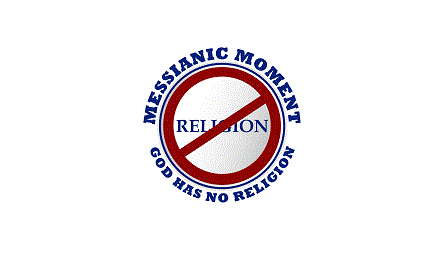Do you recall where, in the Bible, we are told that just believing in Yeshua as the Messiah and Son of God isn’t enough? It is followed by the fact that even the demons believe He is the Son of God (I’ll give you a hint- look for it in the Book of Yakov.)
When I talk to people about salvation, even though I call myself a “Believer”, what I really should start to do is call myself an “Acceptor” because I don’t just believe that God exists, and I just don’t believe that Yeshua (Jesus) is the Messiah God promised us, but I accept this. That means I adopt it, I embrace it, I am committed to living my life differently because of it.
When I accepted that Yeshua is the Messiah, I realized that my life would have to change. When you stop denying your car needs to go to the shop, when you know that you’re overweight and a glucose count of 3,000 is something you cannot live with…whenever you have a “truth” you don’t want to acknowledge, but have to, that is what it is like when you accept the truth (if you will) about Yeshua.
It’s something that, once accepted, can no longer be ignored. You have to make a choice- be a slave to sin or a slave to God.
I think that’s why so many people will believe, but not accept. They live in a sort of partial acceptance and partial denial: they believe Yeshua is the Messiah and Son of God, and that God is real, but they deny to themselves that there are consequences for ignoring God’s rules and laws. They go with, “I believe in Jesus- He died for my sins. And besides that, I’m a good person; I don’t commit murder and I don’t steal, so I will go to heaven.”
WRONG!!! No one is good, everyone sins, and there are 613 commandments in the Old Covenant: take away the 1/3 (thereabouts) of them that deal with the sacrificial system and you still have a lot more commandments, rules and regulations than just not murdering or lying. According to God, and to Yeshua, and to Shaul (St. Paul), if you have violated so much as one stroke of the pen of the Torah you have violated the entire Torah.
God is bi-nomial: it is or it isn’t, right or wrong, black or white, day or night…there is no “middle ground” with God. If there was, we probably wouldn’t need Yeshua.
The truth is we are all sinners, inside and out, and without Yeshua/ Jesus/ the Messiah we wouldn’t have a chance of surviving the second death. That is what people hear, many believe it but so many still don’t accept it as really real.
When you feel a cold coming on, don’t you tell yourself it’s just a sore throat from talking and that you will feel better tomorrow? We know it’s a cold, but we tell ourselves it isn’t. And we keep saying that until we are sick as a dog and now have to face the truth. And by the time we accept the truth, it is too late to avoid the consequences. When I am coughing, nose running and throat sore for two days, it is too late to take the Cold Eeze to avoid the sickness. Now I will have to suffer through instead of either having it much easier or maybe having been able to avoid it, altogether.
If you believe Yeshua is the Son of God and the Messiah God promised, well, big deal. That won’t do it. You need to accept His Messiahship, you need to change how you see sin, you need to do T’Shuvah (turning from sin) and you need to do it now. Who knows when it will be too late?
I used to sell Revocable Living Trusts, which protect an estate from most of the expenses of Probate, and when people would tell me they believe it is a good idea, but they aren’t ready to accept it (i.e., commit to getting it done) just yet, I would say, “That’s right- why spend the money until you absolutely need to? So, since this takes about 3 months to complete (as I pull out my calendar) tell me when you are going to die and I will make an appointment three months before then.”
Unless you know, absolutely, when you are going to die, you need to accept Yeshua now! Don’t just “believe”- that’s not enough. You need to accept, to commit, to do T’Shuvah.
When I was an active duty Marine, I learned that “close” only counts in two games: horseshoes and handgrenades. Believing is close, but won’t get you there. Only accepting will save you.
